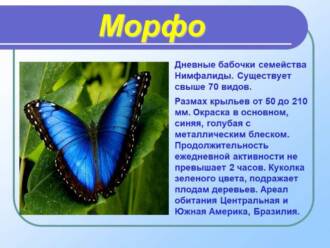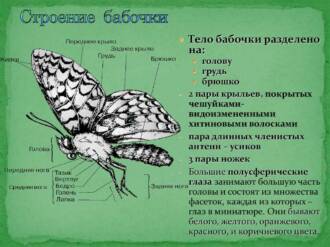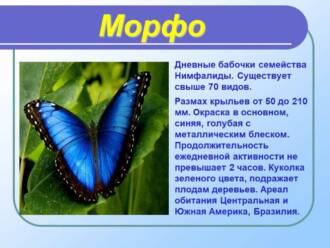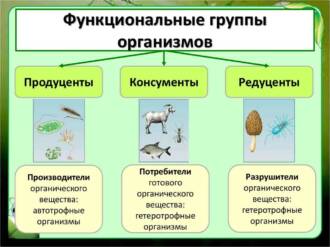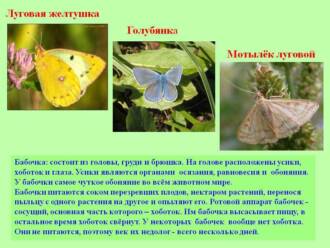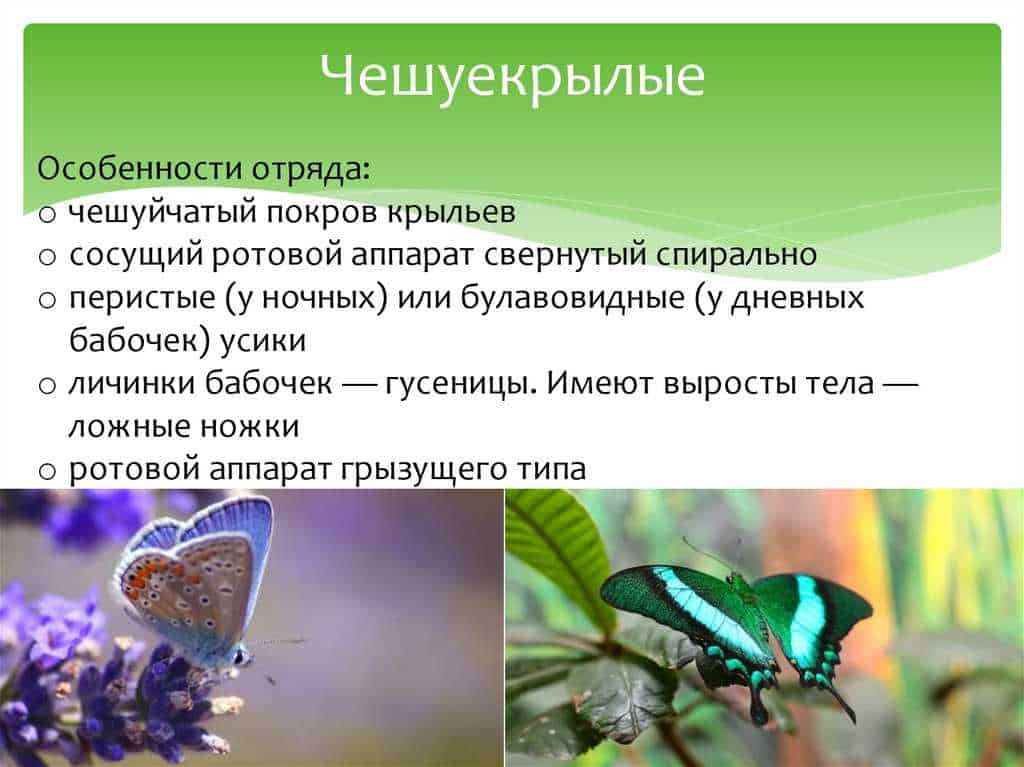
Butterflies are amazing insects that attract attention with their beauty and grace. They belong to the order Lepidoptera and are one of the most numerous and diverse groups of insects. The encyclopedia about butterflies offers to look at this amazing world from a new angle and learn a lot of interesting things about different types of butterflies.
In the butterfly encyclopedia you will find detailed information about the diversity of species, their features and characteristics. The butterflies found can be very different in color, wing shape and size. They have various abilities such as long flight, mimicry and the ability to camouflage.
Butterflies are of great interest to scientists and nature lovers. In the encyclopedia of butterflies you can learn about their unique abilities, such as migration over vast distances, characteristics of reproduction and feeding. You will also learn about the important role of butterflies in the ecosystem, their impact on the flora and biological diversity of the planet.
Diversity of butterflies in the world
Butterflies are amazing creatures with many different types and features. In the encyclopedia about butterflies you can find descriptions and characteristics of many species of these winged insects. Each butterfly has its own unique appearance, colors and patterns on its wings.
One of the most famous butterflies is the monarch. It is distinguished by bright orange wings with black speckles. Monarchs are known for their long-distance migrations and ability to cross oceans.
In the butterfly encyclopedia you can find information about species such as Apollo, admiral, iridescent, cricket and many others. Each species has its own characteristics, for example, some butterflies can imitate the appearance of other insects in order to protect themselves from predators.
The diversity of butterflies in the world is amazing in their shapes, colors and sizes. They can be large and bright, or small and inconspicuous. Their wings can be smooth, variegated, with intricate patterns, or transparent, like glass.
Popular types of butterflies
In the encyclopedia of butterflies you can find descriptions of many species of these beautiful insects. Some of them are especially popular among nature watchers.
1. Apollo
The Apollo is one of the most famous species of butterflies. It is characterized by its delicate white coloring with black stripes and orange spots on the wings. Apollos live in mountainous areas and are often found in the Alps and the Himalayas.
2. Monarch
The monarch is a species of butterfly that is famous for its amazing migratory behavior. They fly long distances over several thousand kilometers. Monarchs have orange-black wings with white spots.
3. Cabbage

Cabbage whites are a species of butterfly that is a pest of cabbage and other crops. Their wings are grey or brownish in colour with various patterns. Cabbage whites actively reproduce and feed on plants from the Cruciferae family.
There are many other popular butterfly species to be found in the butterfly encyclopedia, each with its own unique beauty and characteristics.
Features of the structure and anatomy of butterflies

Butterflies are winged insects that represent a huge variety of species. Their structure and anatomy are one of the most interesting and unique features of these creatures. In the encyclopedia about butterflies you can find a lot of interesting information about their structure.
One of the main structural features of butterflies is their wings. Butterfly wings are made up of microscopic scales that give them beautiful and vibrant colors. The scales on butterfly wings can come in different shapes and sizes, making them unique and beautiful.
Also, in the encyclopedia of butterflies you can learn about the structure of the antennae and eyes of these insects. Butterflies have long and thin antennae, which serve them to sense smells and navigate in space. The eyes of butterflies consist of many small eyes, which allows them to see not only directly, but also around them.
Also, it is worth noting the structural features of the body of butterflies. They are divided into head, chest and abdomen. Butterflies have wings and legs on their chests, which they use to move and find food. The abdomen of butterflies is used for digestion and reproduction.
In the encyclopedia about butterflies you can learn a lot more interesting things about their structure and anatomy. Each type of butterfly has its own characteristics and unique characteristics, which makes them such amazing and beautiful creatures of nature.
Butterfly life cycle
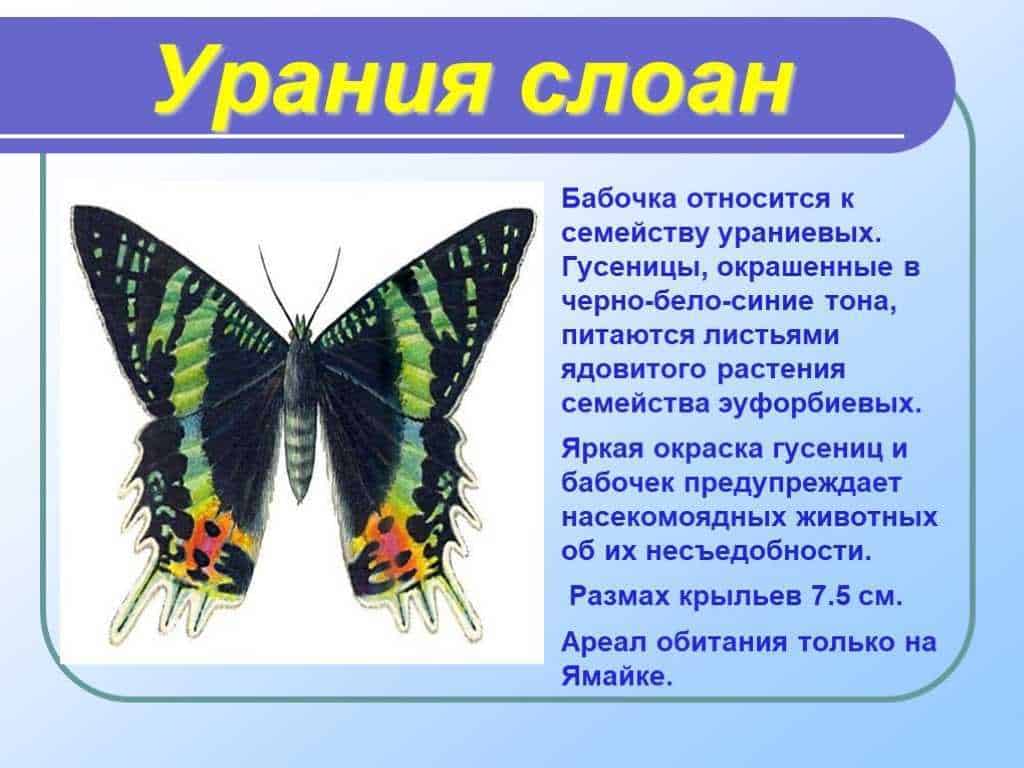
The butterfly life cycle is an amazing and unique process that describes the development of these beautiful insects. The Encyclopedia of Butterflies reveals this phenomenon to us, allowing us to understand how the transformation of a caterpillar into a pupa, and then an adult butterfly, occurs.
The life cycle of butterflies can be divided into several stages:
- Egg: The life of a butterfly begins with a small egg, which is laid by the female on suitable vegetation. The eggs are usually tiny and can come in a variety of shapes and colors.
- Caterpillar: The egg hatches into a caterpillar, which is an active feeding insect. The caterpillar eats a lot and grows quickly, going through several stages of molting. It is covered with a chitinous covering and has many legs for movement.
- Pupa: When the caterpillar reaches a certain size, it turns into a chrysalis. The chrysalis is a dormant stage of the butterfly's life cycle, during which the caterpillar's body undergoes a complete transformation. Complex processes occur inside the chrysalis, resulting in the formation of the wings, legs, and other body parts of the future butterfly.
- Adult butterfly: After some time, which may vary depending on the species, the butterfly hatches from the pupa. The adult butterfly is already fully formed and ready to fly and reproduce. Her wings turn out to be unfolded and underdeveloped, but they quickly dry out and become beautiful and strong.
Thus, the life cycle of butterflies is an amazing process of transformation, which is described in the Butterfly Encyclopedia. This process allows butterflies to go through several stages of development and transform from an egg to a caterpillar, then to a pupa and, finally, to an adult and beautiful butterfly.
Butterfly eating habits
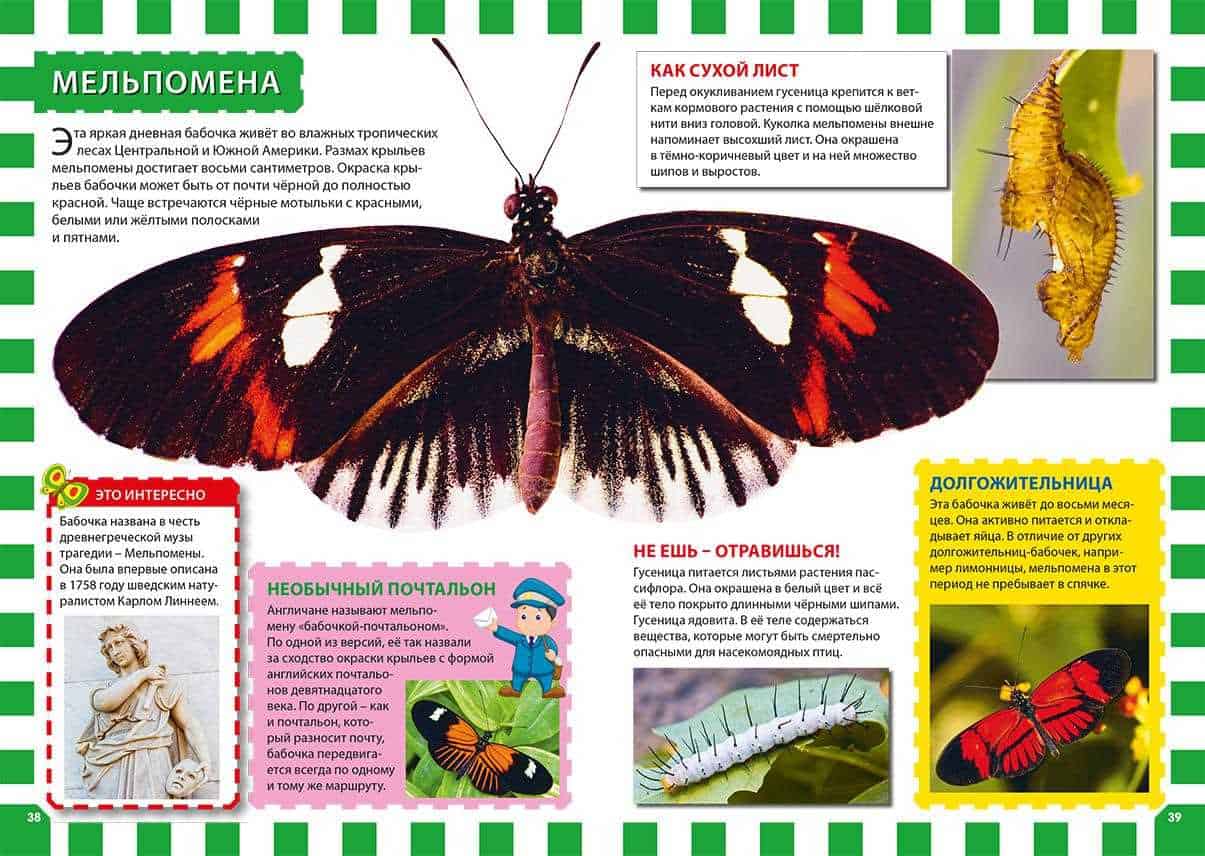
The feeding habits of butterflies are varied and depend on their species and development. In the encyclopedia about butterflies you can find information that most butterflies are phytophages, that is, they feed on plant foods. They can feed on leaves, flowers, fruits or flower nectar.
Some butterfly species prefer certain plants and may be limited in their food choices. For example, monarch butterfly caterpillars feed only on milkweed plants, while cabbage butterfly caterpillars feed only on plants in the cabbage family.
However, there are also predator butterflies that feed on other insects. They can prey on flies, moths, bees and other butterflies. Such butterflies have a developed apparatus for capturing and absorbing prey.
Interestingly, some butterflies are parasites and feed on plant juices, penetrating their stems or leaves. They may also lay eggs on plants for the caterpillars to feed on and develop on.
Methods of protection and camouflage for butterflies
Butterflies featured in the Butterfly Encyclopedia use a variety of defense and camouflage techniques to survive in their environment. They have developed amazing mechanisms that allow them to avoid danger and remain invisible to predators.
Disguise
One of the most common methods of camouflage among butterflies is to mimic their environment. Some species of butterflies have wings with the same colors and patterns as the leaves or flowers of the plants they live on. This allows them to blend into the background and remain invisible to predators.
Protective colors
Some types of butterflies have bright and rich colors on their wings. This serves as a signal to predators that they are poisonous or dangerous. Such colors scare off potential enemies and protect butterflies from attacks.
Irritation and repulsion
Some butterflies have the ability to make sounds or flash bright flashes of light to scare away predators. This phenomenon is called mimicry and helps butterflies escape from danger.
Camouflage
Some butterflies have special structures and patterns on their wings that allow them to hide from surrounding objects, such as tree bark or rocks. Thanks to their camouflage, these butterflies can be virtually invisible to predators.
The role of butterflies in the ecosystem
Butterflies are important participants in the ecosystem and perform a number of important functions.
Plant pollinators. Butterflies are one of the main pollinators of plants. They transfer pollen from one flower to another, facilitating the pollination process and allowing plants to reproduce. Without their participation, many plants would not be able to reproduce and continue to exist.
food for other animals. Butterflies serve as a food source for many other animals. Butterfly larvae are the main food for many birds, frogs and other insectivorous animals. And adult butterflies, with their bright colors and the presence of toxic substances, become unpleasant prey for predators. In this way, butterflies play a role in the food chain and maintain balance in nature.
Indicators of the ecological state. Butterflies can serve as indicators of ecological status. They are sensitive to changes in the environment, such as air pollution or habitat loss. If the number and diversity of butterflies is declining in a particular area, it may be a sign of adverse changes in the ecosystem.
Tourist attraction. Many people enjoy watching butterflies and their beautiful colors. This interest in butterflies can attract tourists to certain regions, promoting ecotourism and supporting local economies.
The importance of conserving butterflies and their habitats

Butterflies are one of the most beautiful and amazing creatures of nature. They are the object of study by many scientists and attract the attention of nature lovers. However, many butterfly species are endangered due to various factors.
Habitat loss is one of the main reasons for the deterioration of the butterfly situation. They depend on certain types of vegetation to provide food for their caterpillars and a place to lay their eggs. However, due to the development of human activities, many meadows, fields and forests are being converted into urban areas or agricultural land. This leads to the destruction of natural habitats and a decrease in butterfly numbers.
The protection and restoration of butterfly habitats is an important step in preserving their species diversity. To do this, it is necessary to carry out work to restore natural landscapes, create reserves and reserves where butterflies can find a safe place to breed and search for food. It is also important to maintain a variety of plants that serve as a source of food for butterflies and create favorable conditions for their habitat.
Without butterflies, our planet will lose one of the most beautiful and unique parts of its biodiversity. The Encyclopedia about Butterflies and the Encyclopedia of Butterflies urge us to take care of these amazing creatures and preserve their habitats. Only through joint efforts can we preserve the wealth of butterflies and enjoy their beauty and grace in the future.

